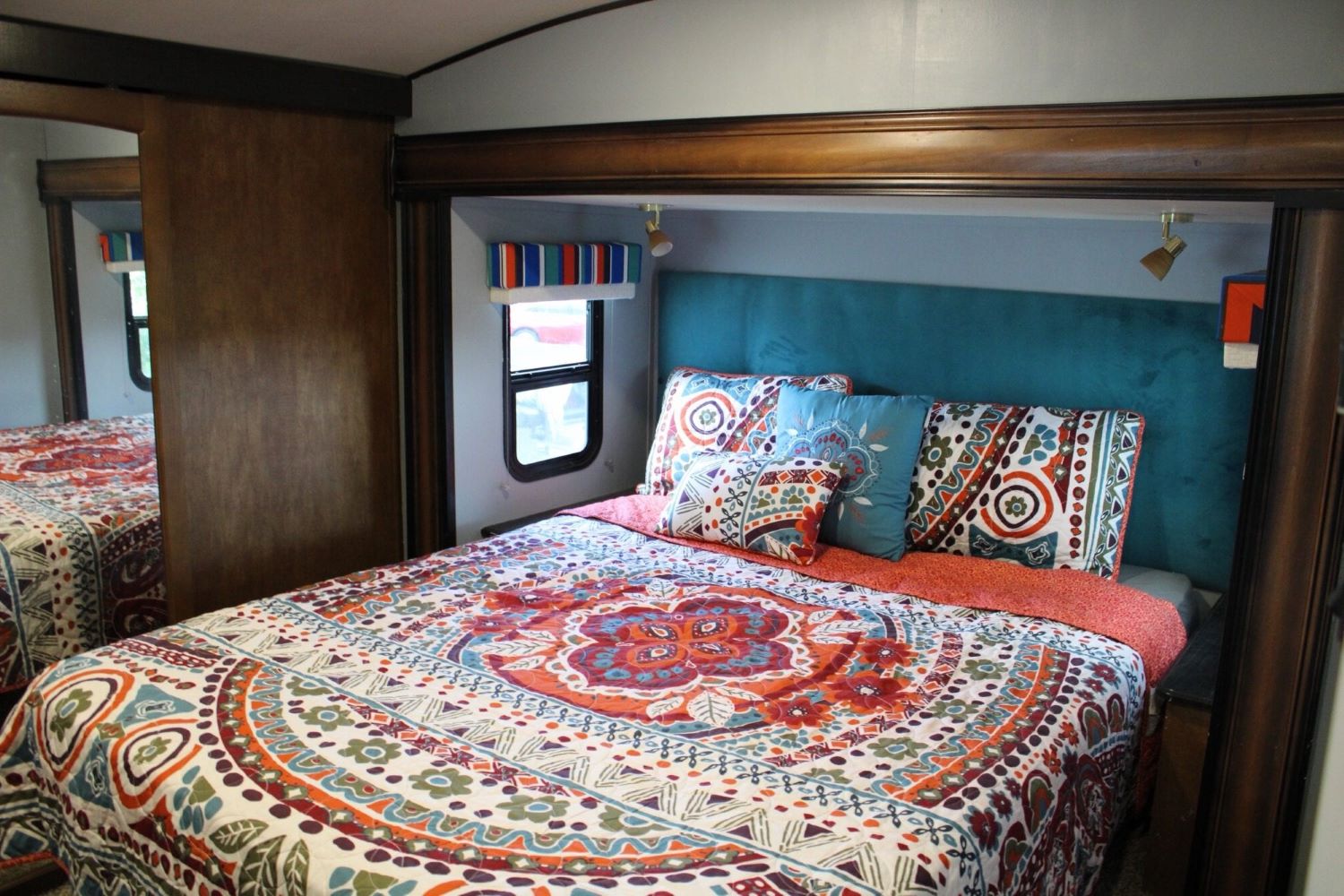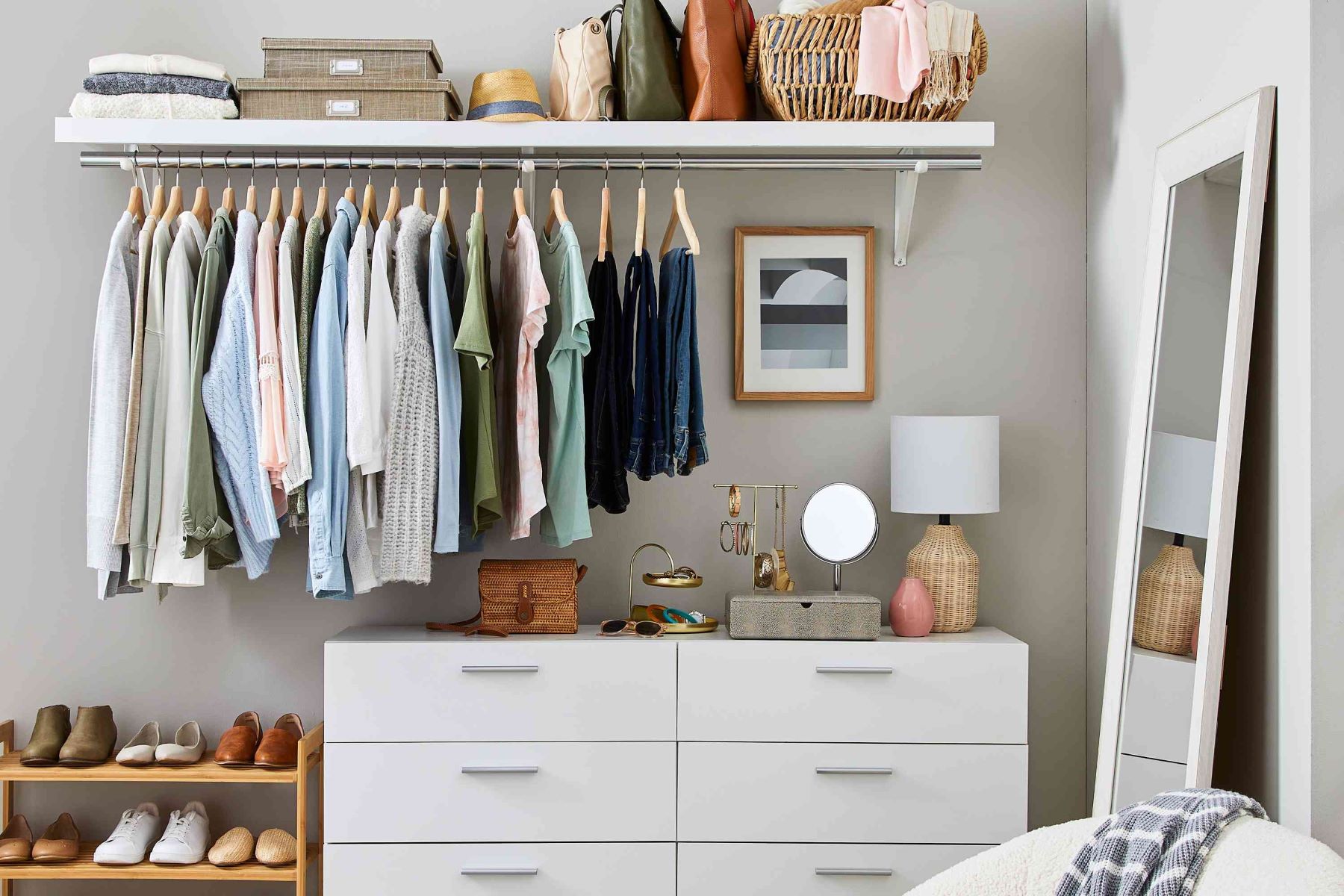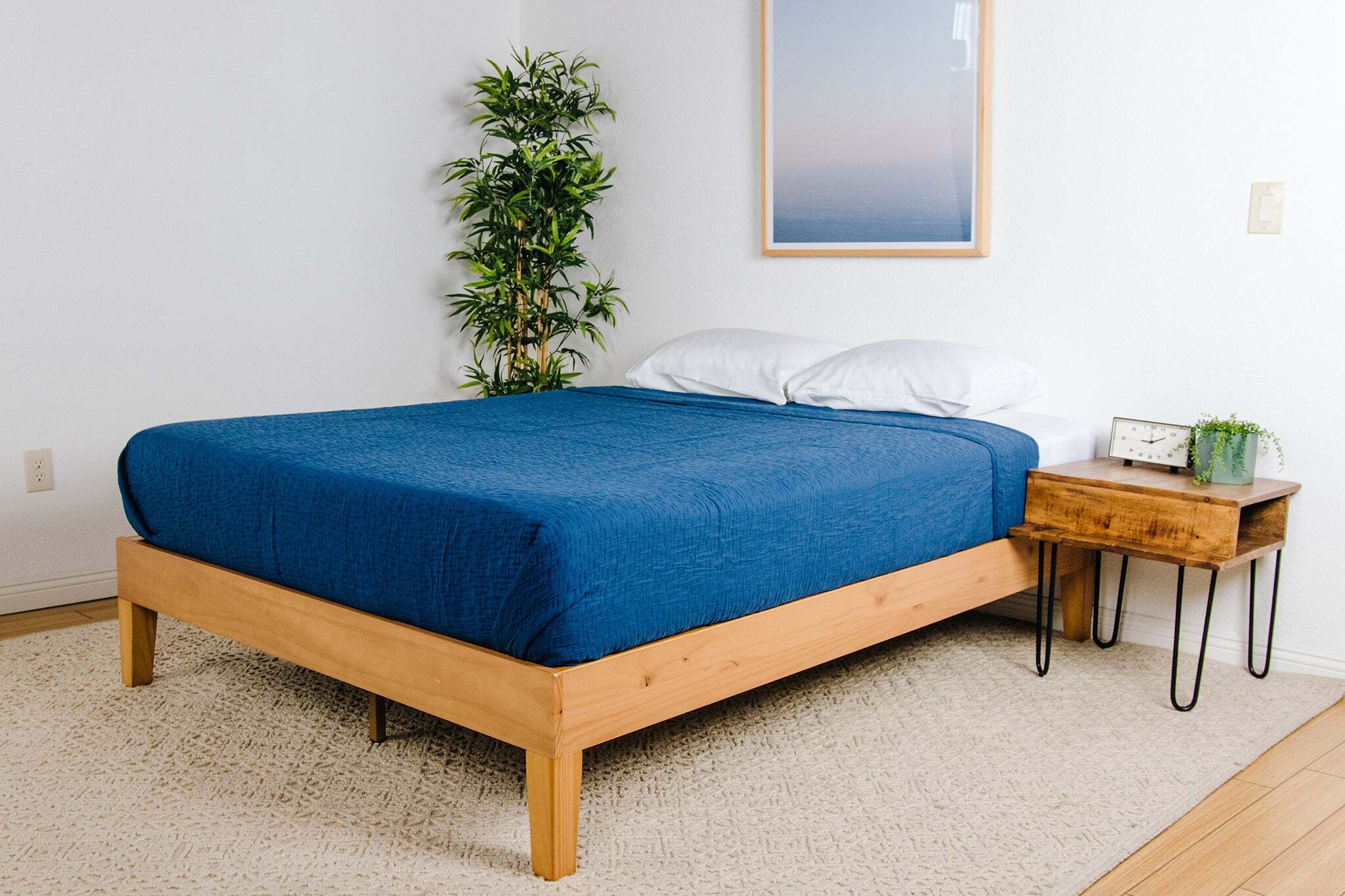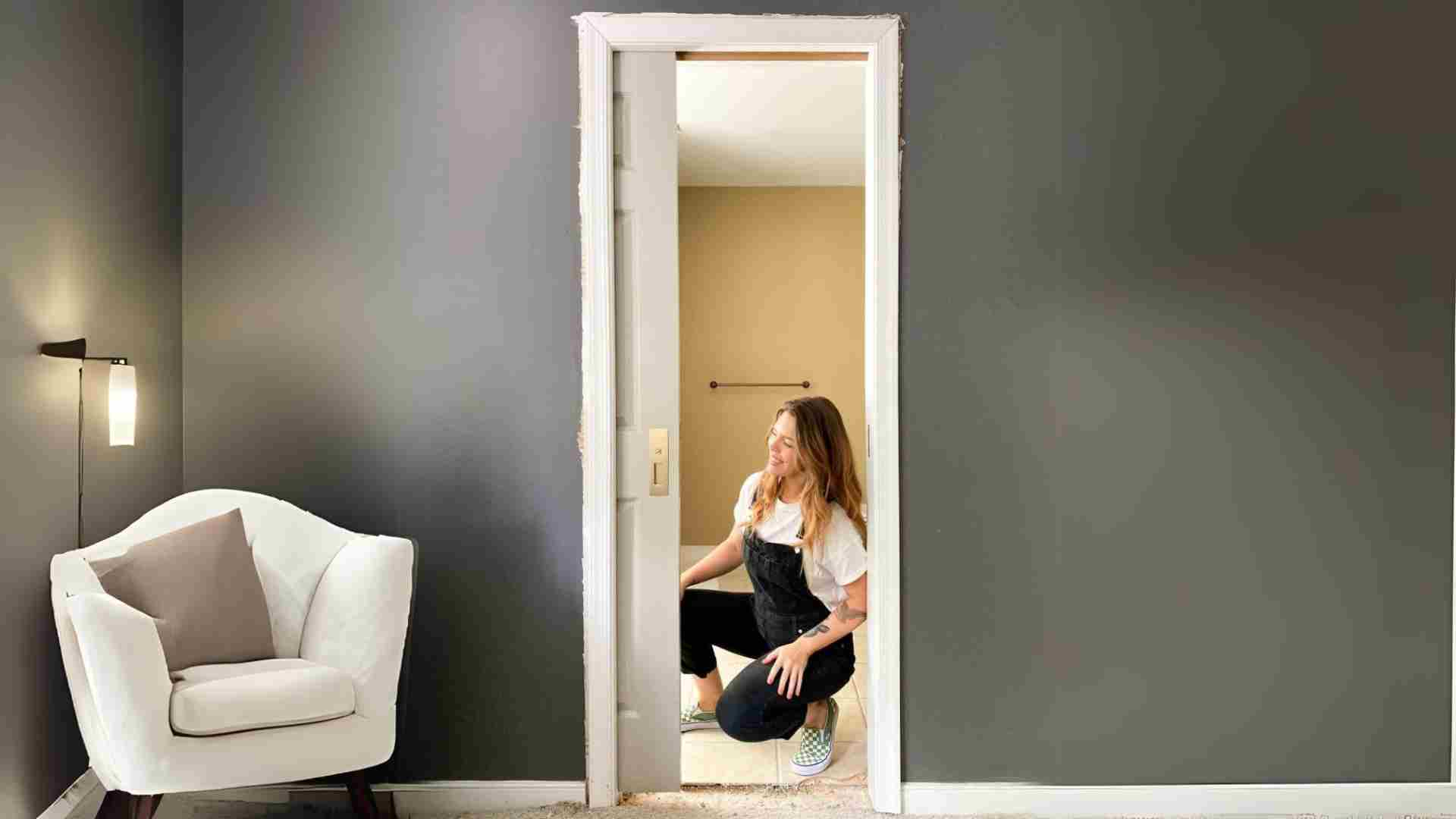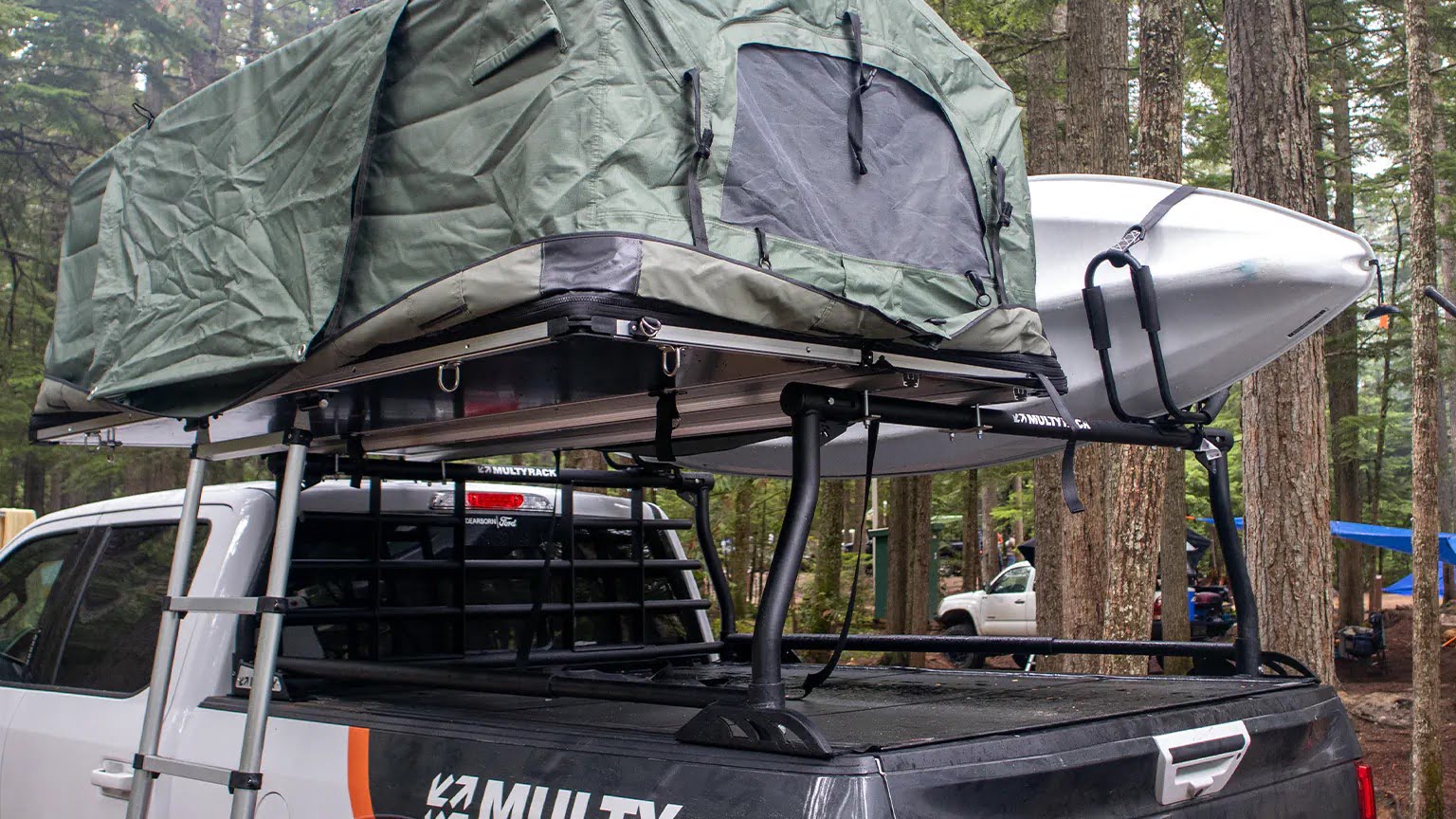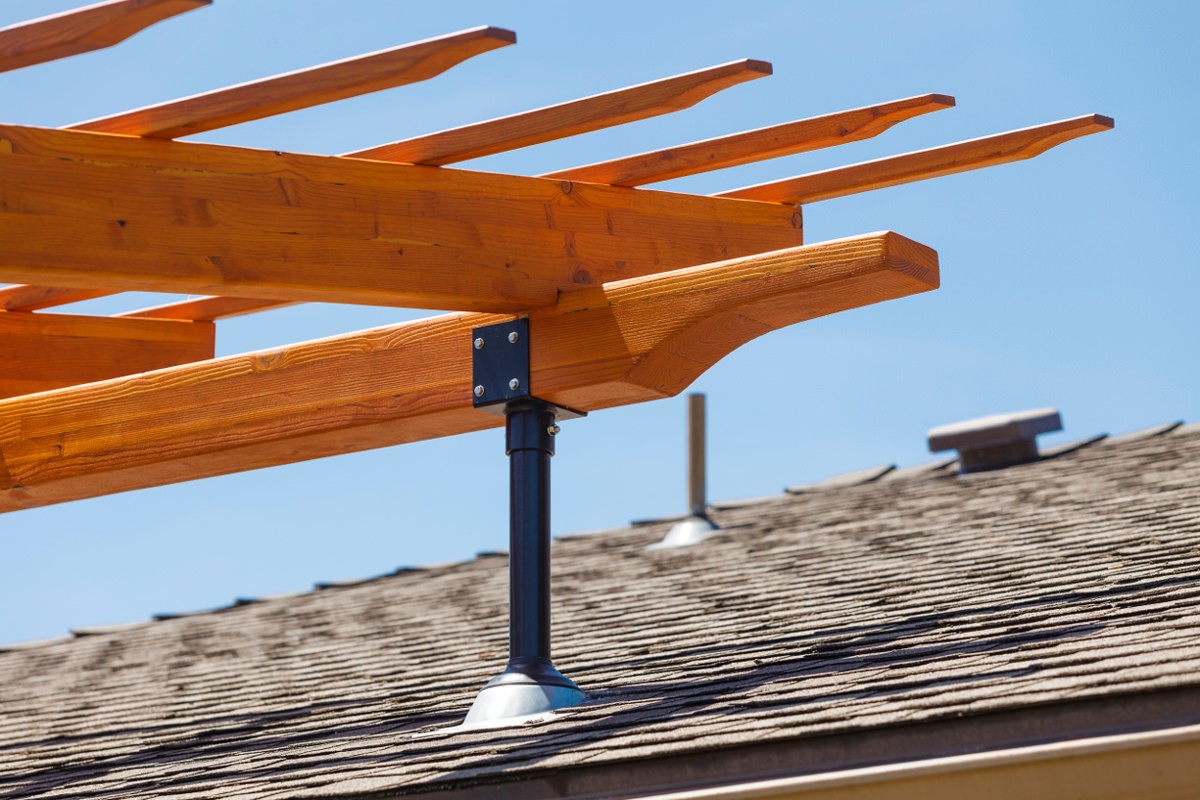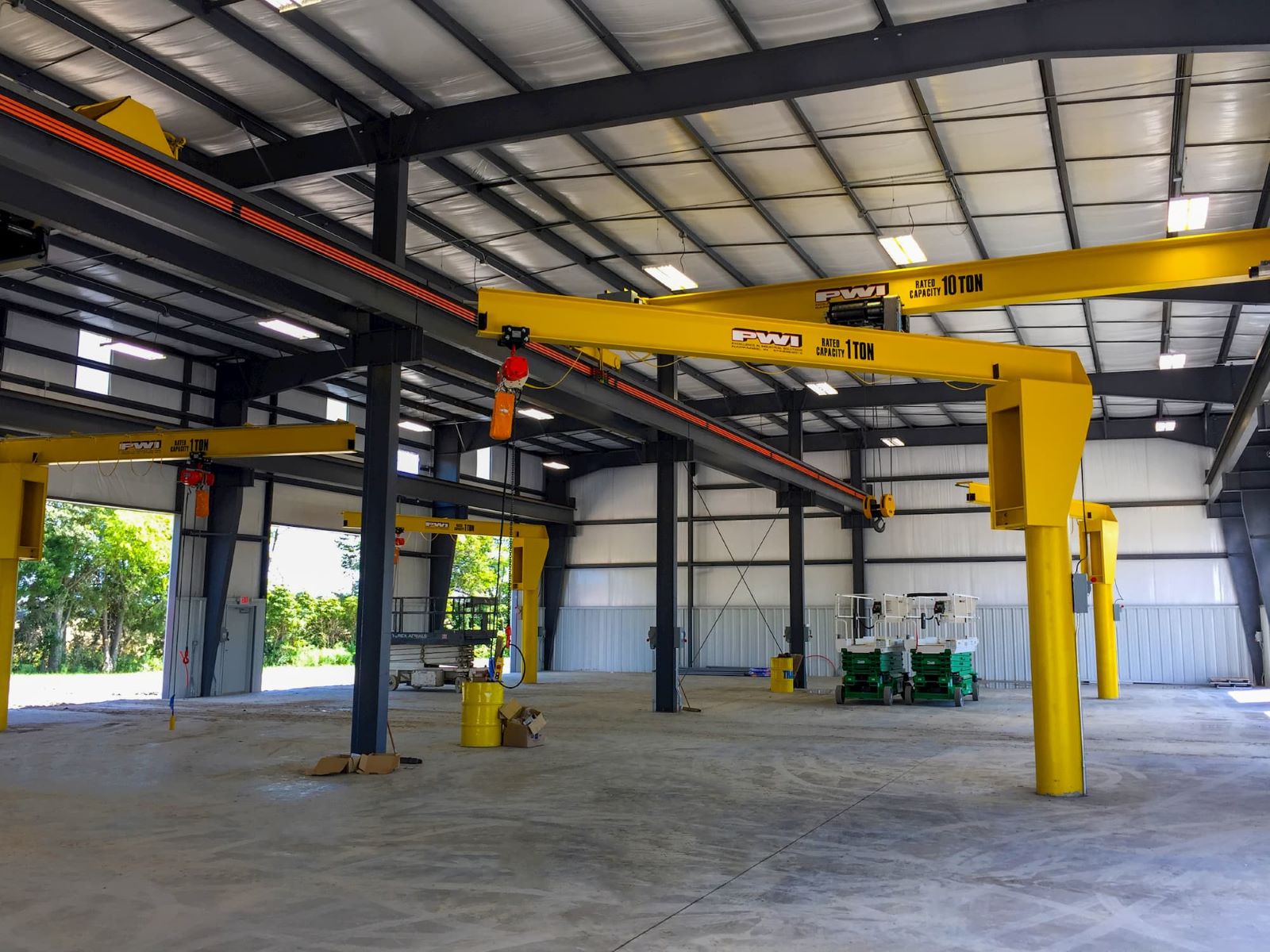Home>Create & Decorate>DIY & Crafts>DIY Bunk Beds: How To Build Your Own Space-Saving Sleeping Solution
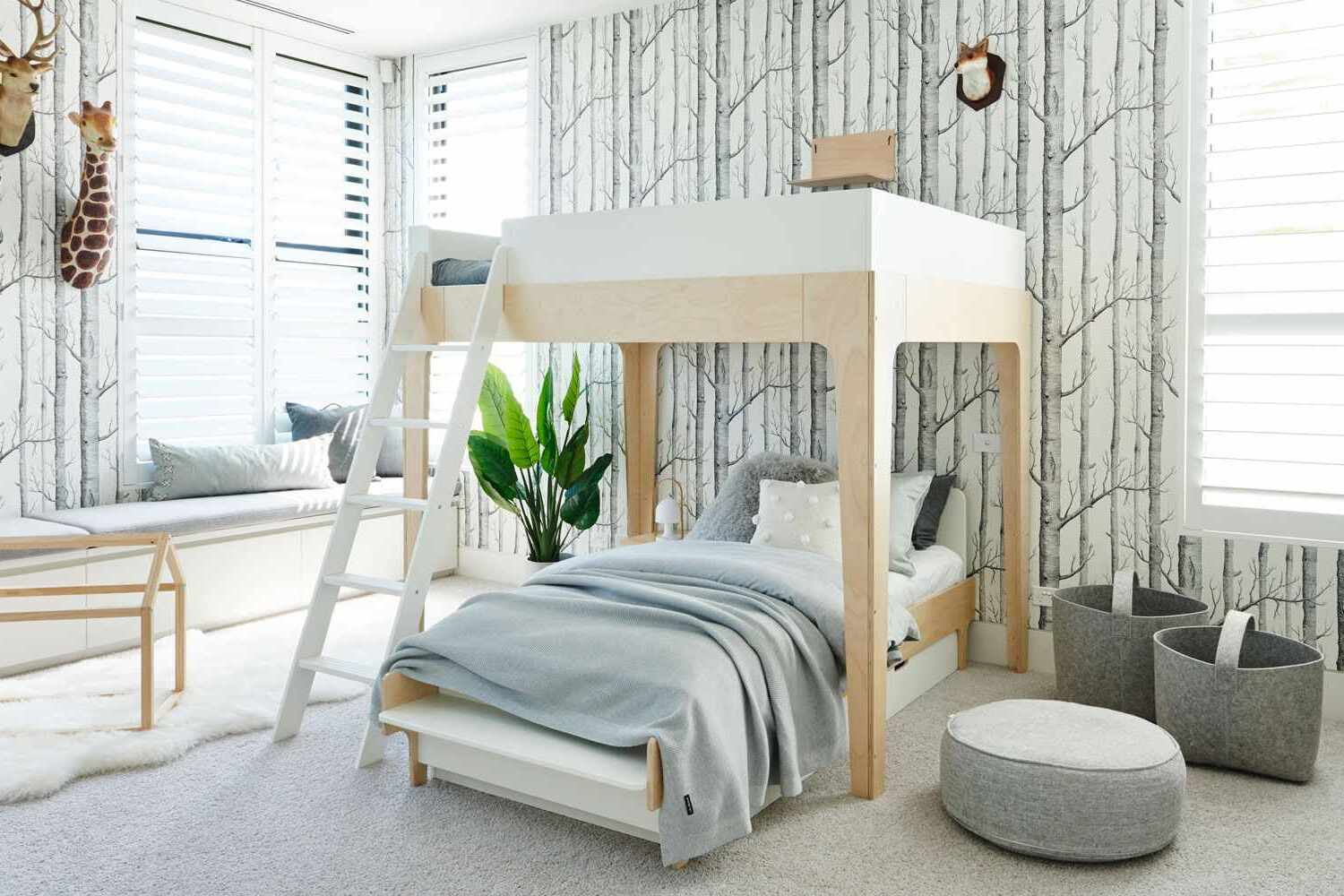

DIY & Crafts
DIY Bunk Beds: How To Build Your Own Space-Saving Sleeping Solution
Published: February 29, 2024

Content Creator specializing in woodworking and interior transformations. Caegan's guides motivate readers to undertake their own projects, while his custom furniture adds a personal touch.
Discover step-by-step instructions for creating your own DIY bunk beds, a perfect space-saving solution for your home. Explore our DIY & Crafts guide now!
(Many of the links in this article redirect to a specific reviewed product. Your purchase of these products through affiliate links helps to generate commission for Twigandthistle.com, at no extra cost. Learn more)
Introduction
Are you looking to maximize space in a shared kids' room or create a cozy sleeping nook in a vacation cabin? DIY bunk beds offer a practical and stylish solution. By crafting your own bunk beds, you can tailor the design to suit your specific needs and preferences, all while enjoying the satisfaction of building a functional piece of furniture with your own hands.
Whether you're a seasoned DIY enthusiast or a novice looking for a rewarding project, constructing bunk beds can be a fulfilling endeavor. Not only does it provide an opportunity to unleash your creativity, but it also allows you to save on costs compared to purchasing pre-made bunk beds. Additionally, custom-built bunk beds can be personalized to complement the existing decor and layout of the room, adding a unique touch to the space.
In this comprehensive guide, we will walk you through the step-by-step process of building your own bunk beds. From gathering the necessary materials and tools to the final touches of sanding and finishing, you'll gain valuable insights and practical tips to bring your bunk bed vision to life. Whether you're envisioning a classic, rustic, or modern design, this guide will equip you with the knowledge and confidence to embark on this DIY adventure.
So, roll up your sleeves, gather your tools, and let's dive into the exciting world of DIY bunk beds. With a bit of creativity, patience, and determination, you'll soon be marveling at your handcrafted space-saving sleeping solution that's sure to impress both kids and adults alike. Let's get started!
Read more: How to Build a Closet Loft Bed
Materials and Tools Needed
Before diving into the construction of your DIY bunk beds, it's essential to gather all the necessary materials and tools to ensure a smooth and efficient building process. Here's a detailed list of what you'll need:
Materials:
- Lumber: Select high-quality lumber that is sturdy and durable. The type of wood you choose will influence the overall look and strength of the bunk beds. Common options include pine, oak, or maple. Ensure that the lumber is appropriately sized for the bed frame, support beams, and ladder.
- Wood Screws: Invest in a variety of wood screws in different lengths to accommodate various assembly needs. Opt for screws designed for woodworking projects, as they offer superior strength and stability.
- Wood Glue: Choose a reliable wood glue to reinforce the joints and connections, adding extra stability to the bunk beds.
- Mattresses: Measure the dimensions of the mattresses you plan to use for the bunk beds. This will guide the overall dimensions of the bed frame and ensure a snug fit for the mattresses.
- Finishing Materials: Depending on your design preferences, gather sandpaper, wood stain, paint, or varnish to add the finishing touches to the bunk beds.
Tools:
- Measuring Tape: Accurate measurements are crucial for ensuring the bunk beds are structurally sound and fit the designated space.
- Circular Saw or Miter Saw: A reliable saw will be essential for cutting the lumber to the precise dimensions required for the bed frame, support beams, and ladder.
- Drill and Bits: A power drill equipped with various drill bits will be used for creating pilot holes and driving the wood screws into place.
- Clamps: Clamps are invaluable for holding pieces of lumber together during assembly, ensuring a secure and precise fit.
- Sander: A power sander or sanding block will be necessary to smooth the surfaces of the lumber and prepare it for finishing.
- Paintbrushes or Stain Applicators: If you plan to paint or stain the bunk beds, have the appropriate applicators on hand for a professional and polished finish.
- Safety Gear: Prioritize safety by wearing protective gear, including safety goggles and work gloves, throughout the construction process.
By gathering these materials and tools, you'll be well-equipped to embark on the construction of your DIY bunk beds. With everything in place, you can proceed to the next steps with confidence, knowing that you have all the essentials for a successful and rewarding building experience.
Step 1: Measure and Cut the Lumber
The initial step in constructing your DIY bunk beds involves precise measurements and accurate cuts of the lumber. This crucial phase sets the foundation for the structural integrity and overall appearance of the bunk beds. Here's a detailed breakdown of the process:
Read more: DIY Loft Bed with Closet Ideas
1.1 Gather the Lumber
Begin by gathering the lumber required for the bed frame, support beams, and ladder. Ensure that the wood is of high quality, free from defects, and appropriately sized for the specific dimensions of your bunk beds. Using a tape measure, carefully mark and measure the pieces according to the design specifications, accounting for the mattress dimensions and any additional features you plan to incorporate.
1.2 Cutting the Lumber
With the measurements in hand, it's time to make precise cuts using a circular saw or miter saw. Take your time to ensure accuracy, as even minor discrepancies can impact the overall stability and aesthetics of the bunk beds. Double-check the measurements before making any cuts, and use a straight edge or square to guide the saw for clean and straight lines.
1.3 Pilot Holes and Notches
As you cut the lumber to size, consider any additional features such as notches for the support beams or pilot holes for the assembly process. Notches can provide a seamless fit for the support beams, while pilot holes prevent the wood from splitting when screws are driven in. Carefully plan and execute these details during the cutting phase to streamline the assembly process later on.
1.4 Labeling the Components
To avoid confusion during assembly, consider labeling the components as you cut them. Marking each piece with its designated position or function can save time and minimize errors during the later stages of construction. This simple yet effective practice can greatly enhance the efficiency and accuracy of the assembly process.
By meticulously measuring and cutting the lumber, you establish a solid foundation for the subsequent stages of building your bunk beds. Attention to detail at this early phase will pay dividends as you progress through the construction process, ensuring that your DIY bunk beds are not only structurally sound but also visually appealing. With the lumber prepared, you're ready to move on to the next step of assembling the frame.
Read more: How to Build a DIY Platform Bed
Step 2: Assemble the Frame
With the lumber meticulously measured and cut to precision, it's time to embark on the exciting phase of assembling the frame for your DIY bunk beds. This pivotal step brings the individual components together, laying the groundwork for the structural integrity and functionality of the beds. Here's a detailed guide to navigating the assembly process with confidence and precision:
2.1 Layout and Organization
Before commencing the assembly, designate a spacious and well-lit area for the process. Lay out all the cut lumber in an organized manner, ensuring easy access to the components needed for the frame assembly. By having a clear overview of the materials, you can streamline the assembly process and minimize the risk of errors.
2.2 Frame Configuration
Begin by arranging the lumber according to the design specifications, forming the basic outline of the bunk bed frame. Depending on the chosen design, this may involve positioning the head and footboards, side rails, and support posts. Take time to align the components accurately, ensuring that the frame takes shape according to the intended dimensions and layout.
2.3 Joinery Techniques
Employ reliable joinery techniques to secure the frame components together. Depending on your skill level and preference, options such as pocket hole joinery, mortise and tenon joints, or traditional wood screws and wood glue can be utilized. Each method offers distinct advantages in terms of strength, aesthetics, and ease of assembly, so choose the approach that aligns with your woodworking proficiency and the desired outcome for the bunk beds.
Read more: How to Build a DIY Loft Bed
2.4 Structural Reinforcement
As the frame begins to take form, prioritize structural reinforcement to enhance the stability and durability of the bunk beds. This may involve adding additional support beams or braces at strategic points within the frame, particularly in areas that will bear the weight of the mattresses and occupants. By reinforcing critical junctures, you ensure that the bunk beds can withstand daily use and provide a safe sleeping environment.
2.5 Alignment and Adjustment
Throughout the assembly process, consistently check for alignment and make any necessary adjustments to ensure that the frame components fit together seamlessly. Use a combination of measuring tools and visual inspection to verify that the frame is square, level, and free from any irregularities. Attention to detail at this stage will contribute to the overall stability and aesthetic appeal of the bunk beds.
By following these detailed steps, you'll successfully assemble the frame for your DIY bunk beds, laying the groundwork for the subsequent stages of the construction process. With the frame securely in place, you're ready to progress to the next phase of adding support beams, further solidifying the foundation of your custom-built sleeping solution.
Step 3: Add Support Beams
With the frame of the bunk beds securely assembled, the next critical step involves adding support beams to fortify the structure and ensure the beds can safely accommodate the weight of the mattresses and occupants. This phase plays a pivotal role in enhancing the overall stability and durability of the bunk beds, contributing to a safe and reliable sleeping environment. Here's a detailed guide to navigating the process of adding support beams with precision and confidence:
3.1 Positioning and Measurement
Begin by carefully determining the optimal placement of the support beams within the bunk bed frame. Consider factors such as the spacing between the beams, the anticipated weight load, and the specific design of the bunk beds. Using a measuring tape and a pencil, mark the precise locations where the support beams will be installed, ensuring uniformity and balance in their positioning.
3.2 Attachment Methods
Select the appropriate attachment methods to secure the support beams to the frame. Depending on the design and materials used, options may include wood screws, brackets, or specialized hardware designed for bunk bed construction. Prioritize methods that offer robust and reliable connections, reinforcing the joints to withstand the demands of daily use.
3.3 Reinforcement Techniques
Incorporate reinforcement techniques to further strengthen the attachment of the support beams. This may involve the use of wood glue in conjunction with screws to create a secure and enduring bond between the beams and the frame. By implementing reinforcement measures, you enhance the overall integrity of the bunk beds, minimizing the risk of structural issues over time.
3.4 Load-Bearing Considerations
As you add the support beams, pay close attention to their load-bearing capacity. Ensure that the beams are capable of supporting the weight of the mattresses and occupants without compromising the stability of the bunk beds. If necessary, consider augmenting the support beams with additional bracing or supplementary reinforcement to accommodate heavier loads.
3.5 Alignment and Testing
Once the support beams are in place, meticulously verify their alignment and structural integrity. Conduct thorough inspections to confirm that the beams are level, securely attached, and capable of fulfilling their load-bearing role. Test the stability of the bunk beds by applying controlled pressure to different areas, ensuring that the support beams effectively distribute the weight and contribute to a solid and dependable sleeping surface.
By diligently adding support beams to the bunk bed frame, you fortify the structure, laying the groundwork for a resilient and enduring sleeping solution. With the support beams securely integrated, the bunk beds are poised to provide a safe and comfortable resting space for years to come. This essential phase sets the stage for the final steps of installing the ladder and applying the finishing touches, bringing your DIY bunk beds to fruition.
Step 4: Install the Ladder
As you progress in the construction of your DIY bunk beds, the installation of the ladder marks a pivotal step in enhancing the functionality and accessibility of the sleeping space. The ladder serves as a vital link between the lower and upper bunks, providing a safe and convenient means for users to ascend and descend. Here's a detailed guide to seamlessly installing the ladder with precision and practicality:
4.1 Ladder Design and Placement
Begin by selecting a ladder design that aligns with the overall aesthetic and functionality of the bunk beds. Whether opting for a traditional straight ladder, a space-saving vertical ladder, or a stylish angled ladder, consider the available space and the preferences of the intended users. Position the ladder against the bunk bed frame, ensuring that it allows for comfortable and secure access to the upper bunk while minimizing any obtrusive impact on the surrounding area.
4.2 Attachment and Stability
Secure the ladder to the bunk bed frame using robust attachment methods that prioritize stability and safety. Depending on the design and materials, options for attachment may include wood screws, brackets, or specialized hardware designed for ladder installation. Prioritize secure anchoring to the frame, ensuring that the ladder remains steadfast and wobble-free during use. Test the ladder's stability by applying controlled pressure and verifying that it can support the anticipated weight load without compromising safety.
4.3 Anti-Slip Measures
Incorporate anti-slip measures to enhance the safety and usability of the ladder. Consider adding non-slip treads or grip tape to the ladder rungs, providing traction and stability for users as they ascend and descend. By mitigating the risk of slipping or losing footing, these simple yet effective measures contribute to a secure and user-friendly ladder experience, particularly important for younger users or individuals with limited mobility.
4.4 Space Optimization
Optimize the ladder installation to maximize the available space and minimize any potential obstructions. Ensure that the ladder's placement allows for unimpeded access to the lower bunk and does not encroach on the surrounding area. By thoughtfully integrating the ladder into the bunk bed design, you create a harmonious and functional sleeping environment that prioritizes both safety and spatial efficiency.
4.5 Aesthetic Integration
Consider the ladder as an integral part of the bunk bed's overall aesthetic, aiming for seamless integration with the frame and surrounding decor. Whether matching the ladder's finish to the bed frame or incorporating decorative elements that complement the room's style, prioritize a cohesive and visually appealing integration. By treating the ladder as a design feature rather than a mere functional component, you elevate the overall look and feel of the bunk beds, adding a touch of personalized charm to the space.
By meticulously installing the ladder, you enhance the accessibility and usability of the bunk beds, ensuring a safe and convenient transition between the sleeping levels. With the ladder securely in place, the bunk beds are poised to offer a practical and inviting sleeping solution that caters to the needs of users of all ages. This essential phase sets the stage for the final steps of sanding and finishing, bringing your DIY bunk beds to fruition.
Step 5: Sand and Finish
As you approach the final phase of constructing your DIY bunk beds, the meticulous process of sanding and finishing takes center stage, elevating the visual appeal and tactile comfort of the completed project. This critical step not only enhances the aesthetic allure of the bunk beds but also contributes to the overall safety and longevity of the furniture. Here's a detailed guide to navigating the sanding and finishing process with precision and finesse:
5.1 Surface Preparation
Commence the sanding process by thoroughly inspecting the entire surface of the bunk beds, paying close attention to the frame, support beams, and ladder. Use a fine-grit sandpaper to smooth out any rough edges, uneven surfaces, or imperfections in the wood. By meticulously preparing the surfaces, you create a clean and uniform canvas for the subsequent finishing treatments, ensuring a professional and polished appearance.
Read more: How to Block Sunlight from Windows
5.2 Smoothing and Contouring
Employ a combination of sanding tools, such as a power sander and sanding blocks, to achieve a smooth and consistent texture across the bunk beds. Focus on contouring the edges and corners, rounding off sharp angles, and refining the details to create a tactile-friendly and visually appealing finish. Pay particular attention to areas that will come into direct contact with users, prioritizing a velvety-smooth touch that enhances comfort and safety.
5.3 Stain or Paint Application
Once the sanding process is complete, it's time to apply the chosen finish to the bunk beds. Whether opting for a rich wood stain to accentuate the natural grain of the lumber or a vibrant paint color to complement the room's decor, ensure even and thorough coverage across all surfaces. Use high-quality brushes or applicators to achieve a flawless finish, allowing the inherent beauty of the wood or the selected color to shine through.
5.4 Protective Coating
Following the application of the stain or paint, consider adding a protective coating to safeguard the bunk beds from daily wear and tear. A clear varnish or polyurethane sealant can provide a durable and resilient shield, enhancing the wood's resistance to scratches, moisture, and fading. Prioritize multiple coats for enhanced protection, allowing each layer to dry thoroughly before applying the next, ensuring a robust and long-lasting finish.
5.5 Final Inspection
Conduct a comprehensive inspection of the finished bunk beds, scrutinizing the surfaces for uniformity, smoothness, and adherence to the desired aesthetic. Verify that the finish is free from blemishes, streaks, or inconsistencies, and make any necessary touch-ups to achieve a flawless presentation. By meticulously attending to the final details, you ensure that the bunk beds exude a professional and refined allure, ready to take pride of place in the designated sleeping area.
By meticulously sanding and finishing the bunk beds, you elevate the project from a functional construction to a visually stunning and inviting piece of furniture. The attention to detail and dedication to achieving a flawless finish culminate in a set of DIY bunk beds that not only provide a comfortable and secure sleeping space but also serve as a striking focal point within the room. With the sanding and finishing process complete, your custom-built bunk beds are ready to enrich the living space with their charm and functionality.
Read more: How to Make DIY Blackout Windows
Conclusion
In conclusion, the journey of constructing your own DIY bunk beds is a testament to the power of creativity, craftsmanship, and practical ingenuity. From the initial stages of gathering materials and tools to the final touches of sanding and finishing, every step in the process has been a labor of love, culminating in a space-saving sleeping solution that embodies both functionality and personalized charm.
As you stand back and admire the completed bunk beds, you're not just witnessing a furniture piece; you're witnessing the tangible result of your dedication and vision. The bunk beds stand as a testament to your ability to transform raw materials into a functional and aesthetically pleasing creation, tailored to meet the specific needs and preferences of your living space.
Beyond the tangible outcome, the journey of building DIY bunk beds is a testament to the value of hands-on craftsmanship and the satisfaction of bringing a practical vision to life. It's a journey that fosters a deeper connection to the living space, as the bunk beds become a tangible expression of your creativity and resourcefulness.
Moreover, the DIY bunk beds serve as a versatile and enduring addition to the room, offering a cozy and inviting sleeping nook that maximizes space without compromising on comfort. Whether it's for accommodating siblings in a shared room, creating a welcoming guest space, or optimizing a vacation cabin, the bunk beds stand as a versatile and practical solution that adapts to diverse living scenarios.
As you reflect on the journey of crafting your own bunk beds, remember that the process is as enriching as the end result. It's a journey that fosters a deeper appreciation for woodworking, design principles, and the transformative power of hands-on creation. The skills and insights gained from this project extend far beyond the completion of the bunk beds, enriching your DIY repertoire and inspiring future creative endeavors.
In the end, the DIY bunk beds stand as a testament to the potential within each of us to shape our living spaces according to our unique preferences and needs. They embody the spirit of innovation and individuality, offering a tangible reminder of the rewards that come from embracing the DIY ethos. With the completion of the bunk beds, you've not only crafted a functional piece of furniture; you've crafted a symbol of creativity, resourcefulness, and the joy of hands-on craftsmanship.

